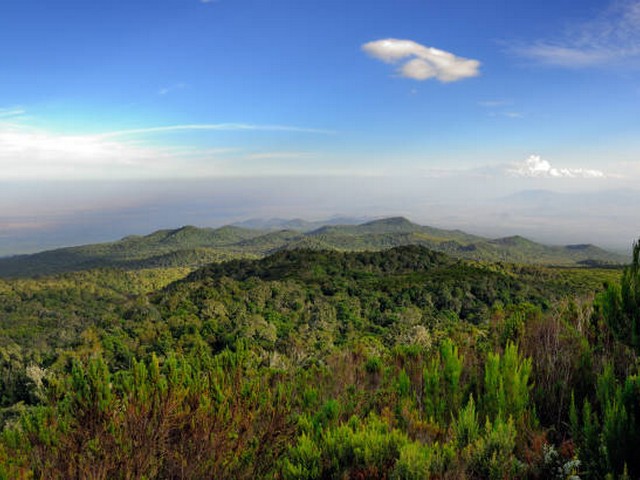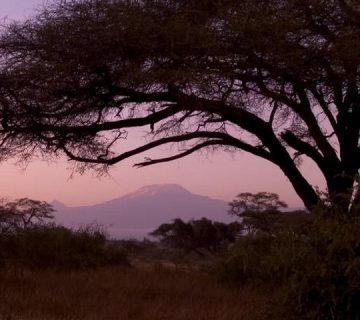Conquering the Roof of Africa: Understanding Health Risks Of High-altitude Kilimanjaro Climbs
Standing as a beacon of majesty and challenge, Mount Kilimanjaro lures adventurers from every corner of the globe. It’s not just a mountain; it’s a monumental journey that tests your endurance, spirit, and connection with nature. At Kilimanjaro Centre for Trekking and Ecotourism (KCTE), we’re not just committed to guiding you to the summit; we’re dedicated to ensuring you understand and manage the health risks associated with high-altitude climbing. Safety, inspiration, and profound experiences are the pillars of our expeditions.
Embracing the Challenge Safely
Climbing Kilimanjaro is a dream for many, but it’s crucial to acknowledge that ascending over 19,000 feet above sea level comes with inherent health risks. High-altitude trekking can affect your body in unexpected ways, and being prepared can make all the difference. Let’s explore these challenges and offer solutions to ensure you can enjoy your climb without compromising on safety.
Understanding Altitude Sickness
Acute Mountain Sickness (AMS)
AMS is the most common health risk faced by trekkers on Kilimanjaro. Symptoms can include headache, nausea, dizziness, and fatigue. These symptoms are your body’s way of telling you it’s struggling to adjust to the lower oxygen levels at higher altitudes.
Prevention and Management:
- Acclimatization: At KCTE, our itineraries are designed to allow your body to adjust gradually. Our routes maximize acclimatization and improve your summit chances.
- Hydration: Drink plenty of water. Dehydration exacerbates AMS symptoms.
- Pace: We emphasize a slow and steady pace – “pole pole” (slowly, slowly) as we say in Swahili, to give your body time to adapt.
High Altitude Pulmonary Edema (HAPE)
HAPE occurs when fluid builds up in the lungs, a severe form of altitude sickness. Symptoms include extreme fatigue, breathlessness at rest, and a persistent cough.
Prevention and Management:
- Recognize symptoms early and inform your guide. At KCTE, our guides are trained in high-altitude first aid.
- Immediate descent is necessary if symptoms intensify.
High Altitude Cerebral Edema (HACE)
HACE is a life-threatening condition where the brain swells with fluid. Symptoms include confusion, difficulty walking, and altered mental states.
Prevention and Management:
- Immediate descent is critical.
- Our guides are equipped with emergency oxygen and evacuation protocols for such rare but critical situations.
The Role of Proper Nutrition and Fitness
Nutrition
Your body needs more energy when climbing at high altitudes. A proper diet rich in carbohydrates and adequate proteins is vital.
- Carbohydrates are your body’s main fuel source during strenuous activities.
- Hydration: Keep sipping water, and avoid caffeine and alcohol.
Fitness
A good fitness level reduces your risk of altitude sickness.
- Cardiovascular Training: Engage in exercises that increase your stamina and lung capacity.
- Strength Training: Focus on building the strength of your leg muscles and core.
Mental Preparation: The Unseen Challenge
Mental stamina is as crucial as physical readiness. The discomfort and rigorous demands of high-altitude trekking can affect your mental state.
- Stress Management Techniques: Practice mindfulness or meditation to prepare mentally.
- Positive Attitude: A positive mindset can influence your physical performance and overall experience.
Journey with Us: Why Choose KCTE?
At Kilimanjaro Centre for Trekking and Ecotourism, we have spent decades perfecting the art of safely guiding adventurers to the summit of Kilimanjaro. Our expert guides, comprehensive acclimatization programs, and unwavering commitment to safety set us apart. We understand the mountain, respect its challenges, and cherish its wonders.
- Expert Guides: Our team is certified and experienced in high-altitude trekking.
- Safety Protocols: We adhere to strict safety standards, including regular health checks.
- Sustainable Tourism: We believe in preserving Kilimanjaro’s beauty for future generations.
Climbing Kilimanjaro is more than reaching a physical location; it’s about uncovering your inner strength and achieving what once seemed unattainable. Let us be part of your journey to not only ensure your safety but also to enhance your connection with this majestic mountain.
FAQs: Your Top Concerns Addressed
What is the best time to climb Kilimanjaro?
The best times are during the dry seasons: January to mid-March and June to October.
Can altitude sickness be prevented?
While not entirely preventable, its impact can be minimized through proper acclimatization, hydration, and a slow ascent.
How long does it take to climb Kilimanjaro?
It typically takes 5 to 9 days, depending on the route. We recommend routes that allow for better acclimatization.
Do I need special insurance for climbing Kilimanjaro?
Yes, you should have travel insurance that covers high altitude trekking up to 6,000 meters.
Is Kilimanjaro climbing safe?
With the right preparation, experienced guides, and adherence to safety protocols, climbing Kilimanjaro is considered safe.
Ready to Embrace the Heights?
Climbing Kilimanjaro is a transformative experience that awaits you. At Kilimanjaro Centre for Trekking and Ecotourism, we ensure you’re equipped not just to succeed, but to experience the journey safely and profoundly. Contact us today to start planning your adventure, where your safety and a spectacular experience are our top priorities. Dare to dream, prepare to achieve, and join us to conquer Kilimanjaro!
Book your Kilimanjaro adventure with Kilimanjaro Centre For Trekking and Ecotourism (KCTE) now!




